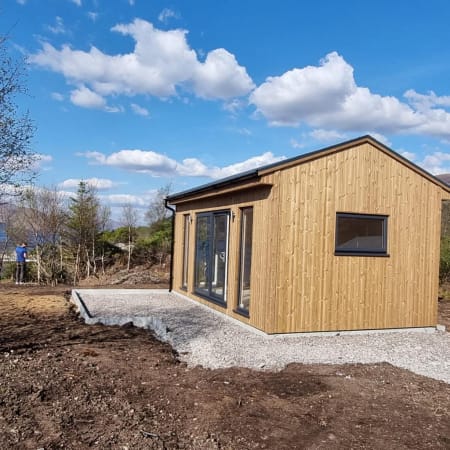Can You Have Air Conditioning In A Garden Room
There are several types of air conditioning systems available for garden rooms, including
Central air conditioning: This system uses a single unit to cool the entire garden room. It is connected to a network of ducts that distribute the cool air throughout the garden room.
Window air con: This system is installed in a window or wall and is used to cool a single room or small area.
Split air con: This system consists of two parts: an indoor unit and an outdoor unit. The indoor unit is installed inside the house and the outdoor unit is installed outside. The two units are connected by a conduit that carries refrigerant and electrical wiring.
Portable air con: This type of air conditioning unit can be moved from room to room and does not require permanent installation.
Ductless air con: This system also consists of two parts, an outdoor unit and indoor unit, but they are connected with a conduit that only carries refrigerant and it doesn't require ductwork.
Geothermal air con: This system uses the constant temperature of the earth as a heat source (in the winter) or a heat sink (in the summer) to heat or cool your house.
Each system has its own benefits and drawbacks, and the best option for a particular home will depend on factors such as the size of the garden room, the climate, and the homeowner's budget.
Which Air Conditioning Is Best For Garden Rooms
From our experience and dealing with thousands of customers over the years we believe that the best type of air conditioning for a garden room is a portable air conditioning unit. During construction our trained installers will insert a 4-5 inch vent into the garden room wall so that the air conditioner can vent directly outside.
The advantages of a portable air conditioning for a garden room unit include:
Flexibility: Portable air conditioning units can be easily moved from room to room, so they can be used to cool different areas of the house as needed. This makes them a good option for homes that have rooms that are not used frequently or for people who move frequently.
Easy installation: Portable air conditioning units do not require permanent installation, so they can be set up and taken down easily.
Cost-effective: Portable air conditioners are generally less expensive than other types of air conditioning systems, making them a cost-effective option for those on a budget.
Smaller and less obtrusive: Portable air conditioners take up less space and are less obtrusive than other types of air conditioning systems, making them a good option for homes with limited space or for people who do not want to alter the appearance of their home.
Energy efficient: Some portable air conditioning units are designed to be energy efficient and can help reduce energy costs.
How Does Garden Room Air Conditioning Work
Air con systems work by removing heat from the air inside a garden room, and then expelling that heat outside. The basic process of air con units involves three main components: the compressor, the condenser, and the evaporator.
The compressor is the heart of the air con system and is responsible for compressing and pumping refrigerant through the system. The refrigerant is a fluid that absorbs heat when it evaporates, and releases heat when it condenses.
The condenser is responsible for releasing the heat absorbed by the refrigerant. The heat is released outside of the garden room through a series of coils.
The evaporator is responsible for absorbing heat from inside the garden room. The heat is absorbed through a series of coils and the refrigerant evaporates, absorbing the heat in the process. The cooled air is then circulated back into the garden room through a series of ducts or vents.
There are several types of air conditioning systems, including window units, portable units, central air systems, and ductless mini-split systems. These systems vary in terms of size, cost, and complexity of installation, but all work on the same basic principle of removing heat from the air inside a garden room.
It's also worth noting that modern air conditioning systems come equipped with advanced features such as thermostats, air filters, dehumidifiers, and air purifiers. These features can improve the overall air quality and comfort level of the space.
